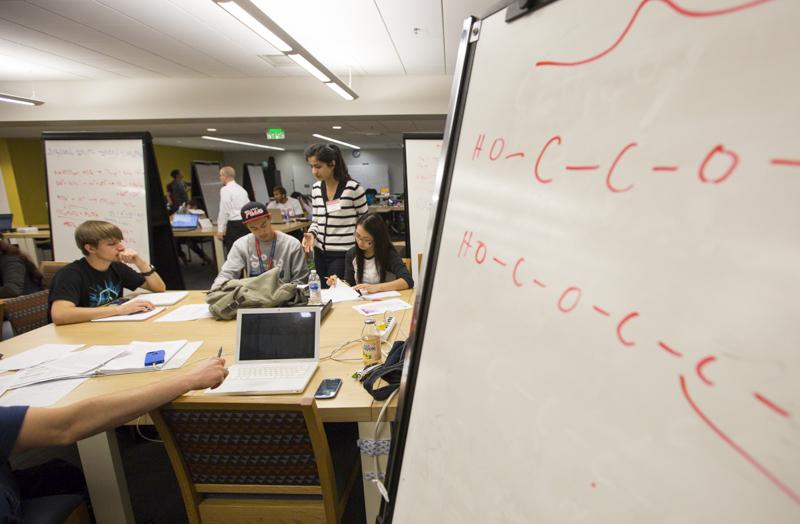
The Learning Center offers an array of academic support services to Fresno State students, but are students fully utilizing these programs?
“I think there’s always more that students can take advantage of,” director of the Learning Center Ivà n Pagà n said. “I think that most students know about our tutoring program, but they might not know as much about the supplemental instruction or SupportNet program.”
A proposed “student success” fee that may take effect in the fall of 2014 is aimed at aiding programs that are viewed to increase graduation rates. Pagà n said that he hopes the proposed fee goes toward aiding and expanding programs in the Learning Center.
“It’s my hope that it will go to services that support students,” Pagà n said. “And I can tell you that we have over 20,000 visits a year between tutoring and supplemental instruction alone that doesn’t even include SupportNet. So that’s a lot of people coming through our doors.
“We can always expand what we’re doing, but of course we’re limited by our staff and our budget. So with supplemental instruction, for example, we can always offer it in more classes.”
Pagà n said that supplemental instruction helps students overcome difficult courses by teaching them study strategies and helping them with the course content.
“Supplemental instruction is a special model where we assign a student to a class so that student attends every class session and meets with the professor once a week,” Pagà n said. “And they hold structured study sessions each week.”
SupportNet aims to coach students in improving study skills, time management and creating success plans. Students who are struggling are referred by professors, or students can refer themselves.
Janene Avedisian, SupportNet academic adviser, said that freshmen are usually referred because of the transition from high school to college.
“I think initially they don’t understand what SupportNet is, and they get a referral and they tend to freak out,” Avedisian said. “But once they do come here, we see that they want to come back. So we’ll see them regularly throughout the semester. It’s very seldom that we see a student just once.”
William Hardaway, academic support coordinator, said that generally students with a 3.0 GPA voluntarily come to the tutoring center for help, but students who are struggling and freshmen don’t take advantage of the tutoring program. Freshmen access initiatives that were created last year have improved the turnout in freshmen this semester, he said.
“We provide history tutoring, and history faculty members help us by requiring their students to come here, which kind of gets students in their freshmen year,” Hardaway said. “In the future when they’re taking a difficult course, then they realize that they can use the Learning Center. We started that about a year ago, and we got a 13 percent increase in freshmen.”
Hardaway said that generally students who attend tutoring sessions have higher scores than students who do not.
“This past fall, Math 76 is an example. People who didn’t visit [the Learning Center] at all were somewhere in the 1.9 range for the mean score of the course, and people who visited were somewhere in the 2.5 range,” Hardaway said.
Pagà n said he realizes some students are reluctant to ask for help, but he urges students to try the Learning Center just once to see how they like it.
Student Lingo, a program that was introduced last fall, allows students to get help 24/7 from the comfort of their own homes. The online-based program helps students with academic and career explanation, learning strategies, reading and writing strategies and personal management.
For more information on Student Lingo, students can go to www.studentlingo.com/fresnostate.




